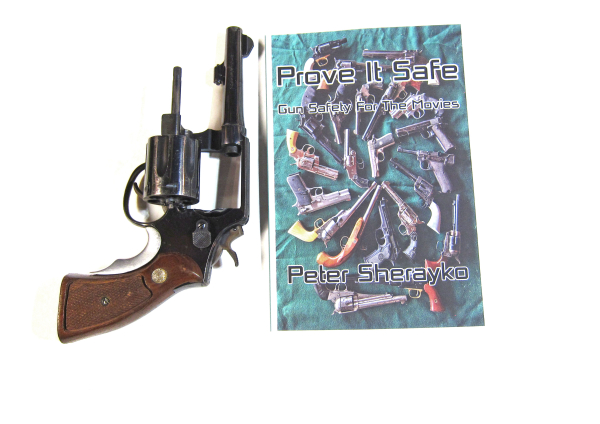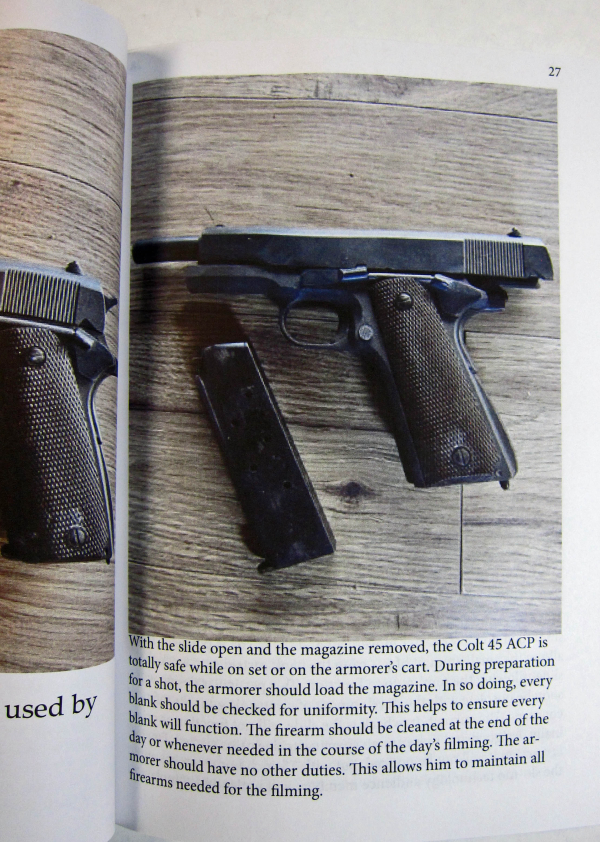Motion pictures and television have been powerful influences on human behavior. Making the act seem realistic ensures people “suspend disbelief” and end up believing what they’re seeing – believing it’s real.

I first realized that live ammo was apparently being used in filming a motion picture when I saw Stagecoach, the breakout film for a young John Wayne. In filming his character, Ringo, shooting from the top of a moving stage, you see the carbine buck against his shoulder in some shots.
In others, the carbine was still through ignition.
Not to pick on John Wayne, but in watching The Searchers, Ethan Edwards throws an 1873 Colt Single Action revolver to Ward Bond’s character, the Reverend, at a river crossing they’re denying to hostiles. Bond is acting surprised that his gun is empty, catches the thrown revolver – throwing his hat back at Wayne -- and quickly cocks the gun as his finger is on the trigger. He throws “a round” at his front into the ground, before recocking, aiming and firing it.
We have live ammo fired on the set of one picture and an AD on the second.
The title of this feature was my thought when I saw that Facebook pal Peter Sherayko (known, in one role, as “Texas Jack” Vermillion in Tombstone) had written a book about gun safety in movies. As a recovering safety Nazi, I thought that this could have come sooner.
The title is Prove It Safe: Gun Safety for the Movies.
I was wrong. Since the early days of cinema, there have been a range of on-set accidents, a good many minor. After considerable time and with other, labor-related changes being made, industry best practices for on-set gun safety became common.
Just not common enough.
If you focus on Rust, you’re behind the curve. There’s been other nonsense and the reality for the working film professional isn’t the same as that for normal Earth people ™. They have other things on their minds and guns just complicate attempts to film dramatic situations, making them look “real,” while ensuring that they’re not real.
The best drama is having … no drama.
I’m not about to get into the motion picture business. I was a consumer of motion picture entertainment some years back and I’m hoping some form of the industry will survive the non-gun issues, major changes in distribution and delivery, in some form.
Sherayko gives a history of motion picture entertainment, as that informs the landscape of using guns in movies today. He has served as an actor in motion pictures, as a consultant on Deadwood, and he owns Caravan West Productions, the one-stop-shop for any film company hankering to make Westerns. His company has a complement of background actors, costumes, gear, set decoration, tack and horses. He has worked on R. Lee Ermey’s Gunny Time and on other productions.

He also serves as a motion picture armorer. Being a historian helps.
In 1915, on the set of The Captive, live ammo was used in one scene. A rifle, possibly a Krag, was still partly loaded and blanks were loaded on top of a live round. An extra was shot in the head and died. From that time, until the 1980s, there were no fatal gun accidents on sets.
In 1984, 1993 and in 2021, there were fatal accidents involving firearms on film sets.
California responded, as a sarcastic commentator might observe, by passing a law in 2023 that went into effect 1 January 2025. This law essentially mandated what moving picture companies had been doing for decades. They passed this law due to an incident in New Mexico, a place where the new law is of no force.
Peter lays out the “motion picture” way of gun handling in the book. He covers dummy ammunition, blank ammunition – of various power levels – and empty cartridges, which also come in handy in some fictional scenarios.
When an actor arrives to do scenes on a Western, for example, he can go to the gun truck (or trailer), get fitted for the period-correct gun belt and holster, as well as a firearm. A non-firing replica – a dummy gun – is also selected. In any scenes not requiring live fire, the dummy is in the holster.

When it comes time to “gun up,” the armorer, in the presence of the 1st assistant director, will show the gun to the actor, likely once again demonstrate its use and mention technical aspects, load it with appropriate blank ammunition – again showing it around – and announce that live fire is about to commence by saying “HOT GUN.” When the scene is over, he’ll take it, clear it and stow it, so it can be cleaned at the end of the day’s festivities.
Ammo is segregated by type and secured in lock boxes.
If you see an actor in a drama taking place in, say, the 1880s, who draws a handgun or takes a long gun in hand and doesn’t touch the trigger, putting that index finger in register, it’s not historically accurate.
But it’s a great example for people to see. I’m okay with that.
Before you real gunnies express outrage at someone else taking an actor by the hand and ensuring safety on set, consider what it’s like taking a class that includes force-on-force exercises.
You’ll be searched for live guns, blades and aerosol chemical restraint devices, issued an FX gun (AirSoft, Simunitions, etc.) and the appropriate ammo. You get your gear back later.
There will be a “director” in the scenario to start it and – when it’s needed – to stop it.
In that way, it’s like doing a movie except with a pain penalty for doing it wrong.
I bought the book. I like supporting people who do the right thing.
And it’s nice to learn a little movie history from a real expert.
— Rich Grassi